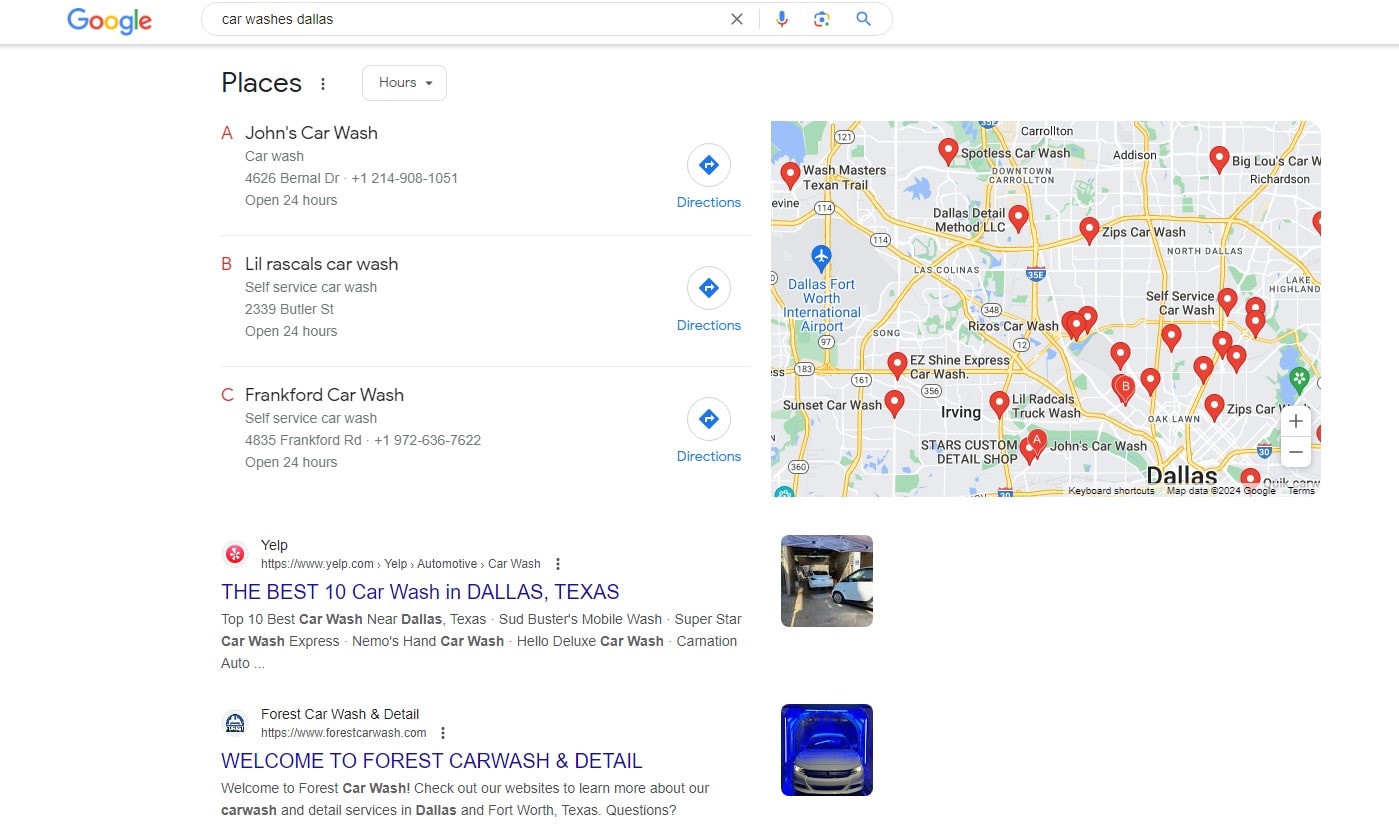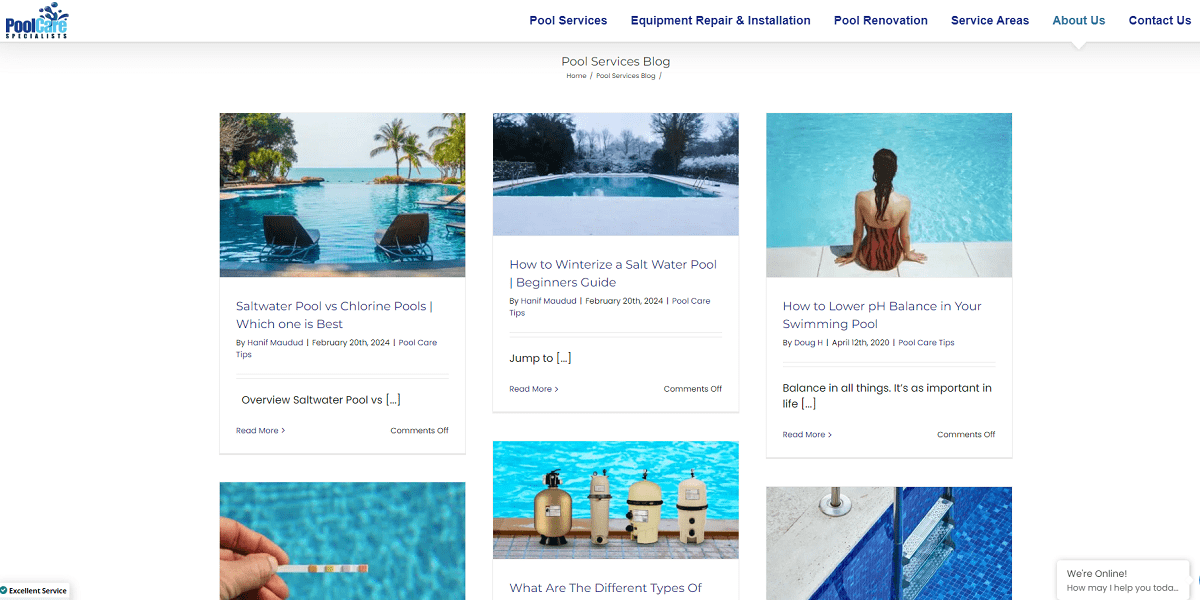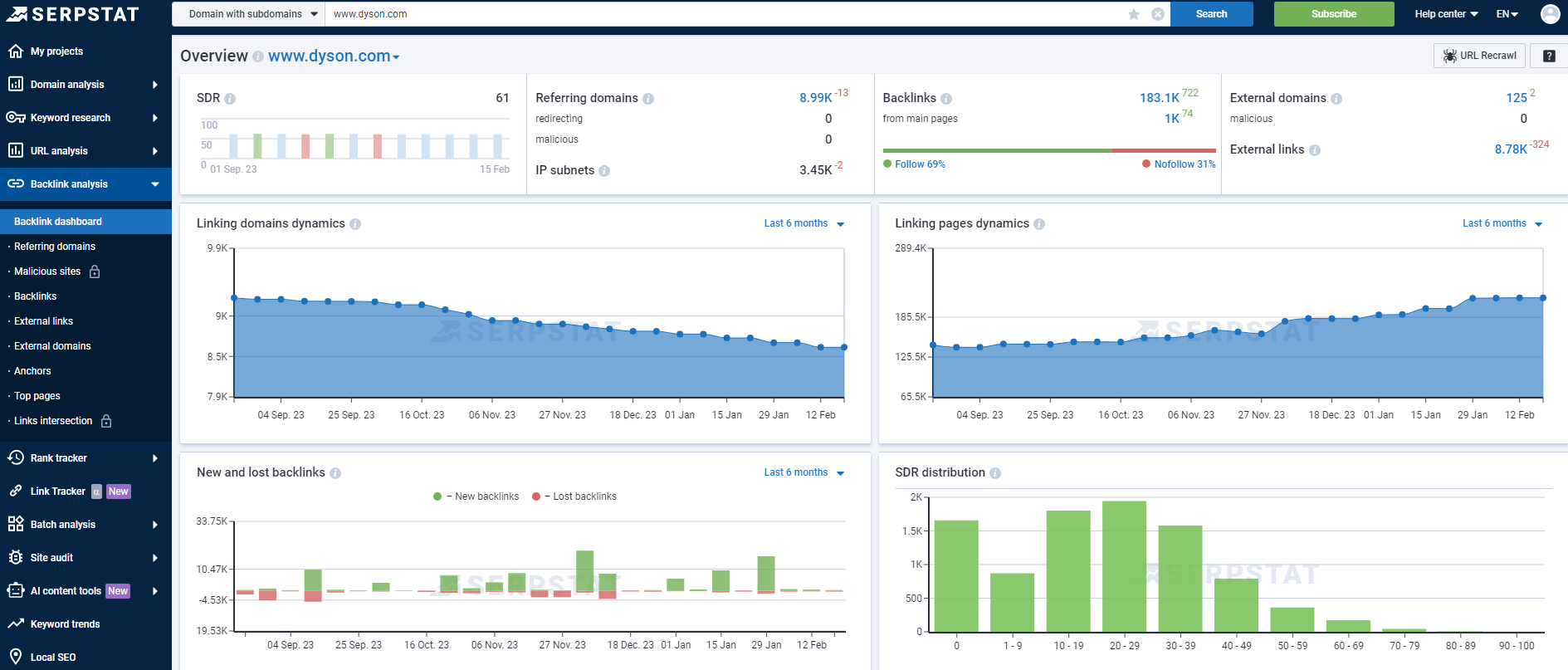Imagine if SEO were a superhero – it wouldn’t wear a cape but would certainly save your service-based business from the depths of the unknown internet! In this fast-paced digital world, the power of Search Engine Optimization is undeniable, especially for service-oriented companies striving to mark their presence online. That’s where the magic of Plerdy comes in – a tool that transforms your website’s SEO from a mere sidekick to the hero of your digital story. In this guide, we’ll dive into the ten best strategies, specifically tailored for service-based businesses, ensuring that your online visibility skyrockets. Get ready to make your website not just visible but unmissable!

Understanding Your Target Audience
Why do some websites hit the mark while others miss the target? It’s not just about having a great product or service; it’s about knowing who you’re talking to. In the dynamic world of SEO for service-based businesses, understanding your audience is crucial for creating content that resonates and ranks.
- Identifying Your Audience: Begin by using analytics tools to dive deep into audience demographics, interests, and behaviors. Websites offer tools that help you paint a clear picture of your ideal customer. This knowledge is the foundation of your SEO strategy.
- Tailoring Content to Audience Needs: With your audience defined, it’s time to craft content that speaks their language. Are they professionals seeking expert advice or homeowners looking for quick fixes? Understanding their pain points and queries helps you create content that answers their questions and positions your brand as the go-to expert. Incorporate SEO keywords naturally into your content, focusing on what your audience is searching for.
Your audience’s needs and preferences will evolve. Keep a finger on the pulse of changing trends and feedback. Stay current with these changes to ensure your SEO strategy matches your audience’s interests. This approach improves your SEO and builds trust and credibility with your audience.
Understanding your target audience isn’t just about numbers and data; it’s about connecting with people at a deeper level. By focusing on who your audience is and what they need, you set the stage for meaningful engagement and lasting business growth.
Keyword Research and Optimization

Understanding your audience’s search behaviors is like discovering a gem. Knowing the proper keywords is crucial for service-based SEO. Keyword research and optimization are covered in this section.
- Tools for Keyword Research: Use robust keyword research tools like Google’s Keyword Planner or Ahrefs. These tools offer insights into the keywords your potential customers are using, their search volume, and how competitive they are. The goal is to choose keywords relevant to your services with decent search traffic, but you must be competitive, and ranking for them is unrealistic.
- Integrating Keywords into Content: Once you have your list of keywords, the next step is integrating them into your website’s content. This includes your web pages, blog posts, titles, meta descriptions, and even image alt texts. The key is to use them naturally. Forced or excessive use of keywords, known as keyword stuffing, can harm your SEO efforts. Instead, weave them into your content to add value to your readers.
Keyword optimization is not a one-time task. Examine your keyword approach regularly to stay current with search trends and audience preferences. Also, monitor your website’s analytics to see your keywords’ performance and adjust as needed.
Effective keyword research and optimization are critical for ensuring your service-based business gets found by the right people at the right time. By carefully selecting and strategically placing your keywords, you’ll improve your site’s visibility and draw in a more targeted, engaged audience.
Leveraging Local SEO

Local SEO is like a compass that guides local customers straight to your doorstep. For service-based businesses, it’s not just about being online; it’s about being found by the local community.
Setting Up Google My Business:
- Claim and verify your Google My Business (GMB) listing.
- Ensure your NAP (Name, Address, Phone Number) information is consistent across the web.
- Provide detailed information about your services, operating hours, and location.
- Regularly update your GMB profile with fresh content, such as posts, offers, and events.
For a deep dive into optimizing your GMB, resources like Google’s Business Help offer invaluable guidance.
Local Keyword Integration:
- Identify keywords that include your city, neighborhood, or region. For instance, “Miami accounting services” or “24/7 electrician in Brooklyn.”
- Integrate these local keywords into your website’s content, blog posts, meta tags, and alt descriptions.
- Use local keywords in a natural and relevant way to avoid keyword stuffing.
Always aim to integrate accurate business information with location-focused keywords. This strategy isn’t just about pleasing search engines and connecting with your community.
Local SEO isn’t a one-time effort; it’s an ongoing journey of maintaining your online presence and adapting to the needs of your local customers. By effectively managing your Google My Business profile and strategically using local keywords, you’re not just optimizing for search engines but becoming a trusted local staple.
Crafting High-Quality, Relevant Content

SEO is all about content. Content must be as rich as a good cup of coffee, leaving your audience wanting more. For service-based businesses, this means creating content that attracts and retains customer attention.
Understanding Content Relevance:
Your content should be a perfect blend of what your audience needs and what your business offers. It starts with understanding your audience’s pain points and delivering solutions through your content.
Engaging and Informative Writing Techniques:
- Address the reader in a conversational tone.
- Break down complex ideas into digestible pieces.
- Give instances and experiences from actual life.
- Incorporate visuals like images and infographics to enhance understanding.
- Always end with a clear call to action, guiding readers on the next steps.
Quality content is a magnet that draws in your audience and establishes your authority and trustworthiness. It’s about creating a space where your audience finds value, which, in turn, boosts your SEO efforts.
Finding a happy medium between your audience’s needs and your company’s offerings is key to creating high-quality, relevant content. Understanding your audience and using engaging writing approaches can help you develop compelling material. Great content elevates your SEO and builds lasting relationships with your customers.
SEO-Driven Mobile Optimization for Service-Based Businesses

A good SEO strategy requires your service-based business’s website to be mobile-friendly in today’s digital world, where smartphones are part of daily life. For businesses centered on providing services, mobile optimization transcends being a mere trend; it’s an indispensable approach to engaging with your audience on their most used devices.
Mobile optimization in the context of SEO for service-oriented businesses entails crafting a website that is as efficient and user-friendly on mobile devices as on desktops. This includes implementing a responsive design that adjusts smoothly to different screen sizes, guaranteeing fast loading times, and refining navigation to elevate the user experience. The objective is to offer a consistent and seamless experience across all devices.
Essential elements of mobile optimization for enhancing SEO include:
- Streamlined menus.
- Touchscreen-friendly buttons.
- Content that remains legible without the need for zooming.
Importantly, a mobile-optimized site doesn’t only align with user preferences but also gains favor in search engine rankings. For instance, Google specifically favors mobile-friendly websites in its search results.
Adopting mobile optimization is a strategic move for service-based businesses, aimed not just at keeping pace with digital evolution but at genuinely acknowledging and adapting to the browsing habits of your audience. A website optimized for mobile is a vital tool in reaching a broader audience, improving user experience, and reinforcing your SEO efforts, making it a valuable investment in the reach and accessibility of your service-oriented business.
SEO-Enhanced Backlink Strategy for Service-Based Businesses

In digital marketing, especially for SEO-driven service businesses, building backlinks is comparable to networking in the business world – it hinges on who you connect with and who recognizes you. For businesses centered around services, acquiring high-quality backlinks is pivotal in strengthening your website’s authority and elevating your SEO profile.
- Guest Blogging and Partnerships for SEO Enhancement: A prime strategy for service-oriented businesses to amass backlinks is through guest blogging and establishing partnerships with industry-aligned websites. By offering valuable content to other esteemed sites in your niche, you do not just flaunt your expertise but also secure a backlink to your website. This tactic fulfills two key objectives: it cements your status as an industry authority and boosts SEO through precious external links.
- Prioritizing Quality in Backlink Acquisition: For businesses focusing on services, it’s crucial to emphasize the quality of backlinks over their quantity. A handful of backlinks from prestigious websites is significantly more advantageous than numerous links from lesser-known or irrelevant sites. SEO tools like Moz’s Link Explorer are instrumental in evaluating the quality of backlink sources.
- Diligent Backlink Building for SEO Success: Building backlinks demands commitment and effort, but the results are worth it for service-based businesses. High-quality backlinks can dramatically increase your website’s visibility in search engine results, attracting more organic traffic.
- Backlinks as a Cornerstone of SEO Strategy: Backlinks are essential to any effective SEO strategy, particularly for service-centric businesses. By crafting quality backlinks through guest blogging, partnerships, and choosing reputable sources, your business’s website gains authority and visibility. This strategic method of backlink building enhances your SEO and firmly establishes your service-based business as a credible and authoritative voice within your industry.
Utilizing Social Media

In today’s digital landscape, social media is not just a networking platform; it’s a powerful tool for amplifying your SEO efforts. For service-based businesses, leveraging social media can significantly boost online presence and customer engagement.
- Social media audience engagement is key. Platforms like Facebook, Twitter, and Instagram offer unique opportunities to share content, interact with customers, and increase brand visibility. Regularly posting updates, informative articles, and engaging visuals can drive traffic to your website, indirectly boosting your SEO. It’s about creating a community around your brand where customers can engage and share their experiences.
- Social media also acts as a channel for customer service. Responding promptly to queries and feedback on these platforms can enhance your reputation and foster trust with your audience. A strong social media presence reflects positively on your brand, contributing to your overall SEO strategy.
Social media is a key player in the modern SEO playbook. Engaging with your audience, producing good material, and delivering excellent customer service on these platforms can boost your brand’s online visibility and digital footprint. It’s a strategic approach that goes beyond likes and shares, focusing on building lasting relationships with your audience.
Continuous SEO Monitoring and Updating

In the fast-evolving world of SEO, resting on your laurels can mean getting left behind. For service-based businesses, continuously monitoring and updating your SEO strategy is beneficial and necessary for staying ahead.
Tools for SEO Monitoring:
- Track website traffic and activity using Google Analytics.
- Monitor keyword rankings to see how well your pages perform in search results.
- Keep an eye on backlink profiles to ensure you’re gaining quality links.
Implementing SEO Updates:
- Keep current with SEO trends and algorithm upgrades.
- Regularly refresh website content to keep it current and relevant.
- Adjust meta tags, headers, and descriptions based on performance data.
- Revisit your keyword strategy periodically to align with current search trends.
SEO is a dynamic process requiring ongoing attention and adaptation. Regularly employing analytical tools provides valuable insights, guiding necessary updates and tweaks to your strategy. Staying proactive and sensitive to SEO changes can help your service-based firm attract and retain the correct audience online.
User Experience and Site Navigation

User experience (UX) in SEO is like the rhythm of music; it must flow smoothly to keep the audience engaged. For service-based websites, ensuring a seamless UX is vital in keeping visitors interested and navigating effortlessly through your content.
A well-designed user interface, intuitive site navigation, and easily accessible information form the backbone of effective UX. This means your website should load quickly, display correctly on various devices, and guide visitors intuitively toward the information they seek. Visitors’ time on your site and their ability to find what they’re looking for are impacted by the simplicity of your menus, the organization of your pages, and the logic of your layout.
A user experience and site navigation focus are essential for any successful SEO strategy. It’s about ensuring visitors find your website and enjoy the time they spend there. By optimizing the UX, you not only improve customer satisfaction but also signal to search engines that your site is valuable, boosting your SEO efforts. A user-friendly website is the key to turning visitors into loyal customers.
SEO-Optimized Meta Tags and Descriptions for Service-Based Businesses

In the intricate SEO world for service-based businesses, meta tags and descriptions are like your website’s concise, compelling elevator pitch. They briefly examine your page’s content, altering search engine rankings and user engagement.
The art of crafting these SEO tools for your service business lies in their ability to be brief yet impactful, effectively encapsulating the essence of your page. This involves skillfully integrating relevant keywords, which is essential for search engines to grasp your content’s context. However, it’s important to balance keyword use, aiming for relevance and clarity rather than keyword stuffing.
Meta tags and descriptions are foundational to SEO success, especially for businesses providing services. They assist search engines in correctly indexing your content and attracting potential customers to visit your site. These brief yet powerful text snippets can drastically influence your site’s performance in search results. As vital components of your SEO strategy, they should be crafted to be precise, captivating, and truly reflective of the content of your page, thus maximizing their effectiveness.
Addressing Negative SEO and Competition

In the competitive landscape of SEO, staying vigilant against negative SEO tactics and understanding your competition is critical for safeguarding and enhancing your online presence.
- Identifying Negative SEO: Negative SEO can harm your rankings, such as malicious backlinks or spammy content directed at your website. Regularly monitoring your backlink profile is essential. Tools like Google Search Console can help identify any suspicious activity. If you spot a sudden influx of low-quality backlinks, you must take action by disavowing these links through Google’s disavow tool.
- Staying Ahead of Competitors: Understanding what your competitors are doing is vital for staying ahead. Conduct regular competitor analyses to see what keywords they target, where they get backlinks from, and what content they publish. This doesn’t mean copying them but learning from their strategies and finding opportunities to differentiate and excel.
Addressing negative SEO and understanding your competition are key components of a robust SEO strategy. By actively monitoring for any negative actions against your site and monitoring your competitors’ strategies, you can better position your service-based business for success. Being proactive in these areas protects your website and provides insights for continuous improvement and innovation in your SEO efforts.
Conclusion
From identifying your target demographic to fending off rivals, every move in search engine optimization (SEO) is crucial for service-based companies. SEO isn’t just a strategy; it’s a continuous journey towards digital excellence. But don’t stop here. Dive deeper into digital marketing with other insightful articles on Plerdy’s blog, where each piece is a new chapter in mastering online success. And if you’re looking to elevate your SEO game further, explore Plerdy’s suite of tools. They’re designed to streamline your efforts and propel your online presence, making your journey through the SEO landscape successful and enjoyable.
